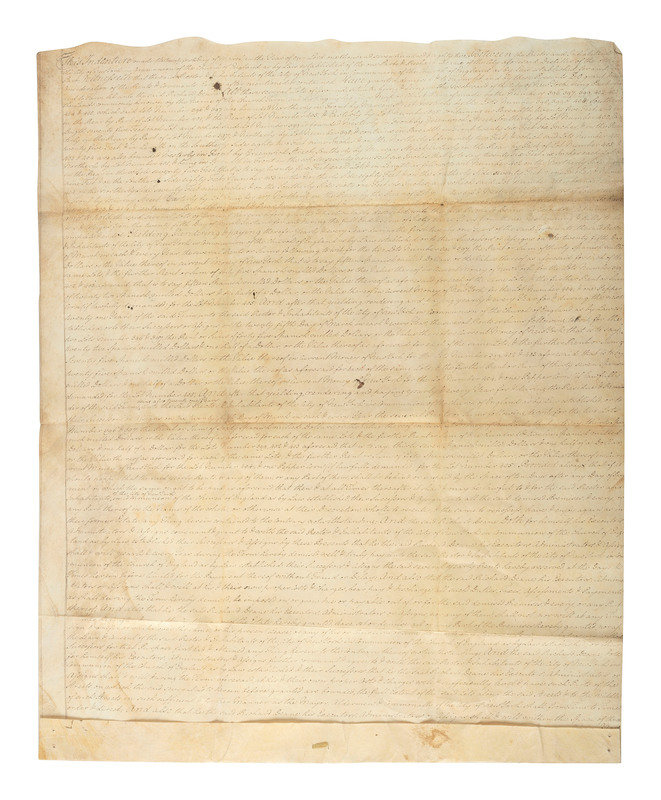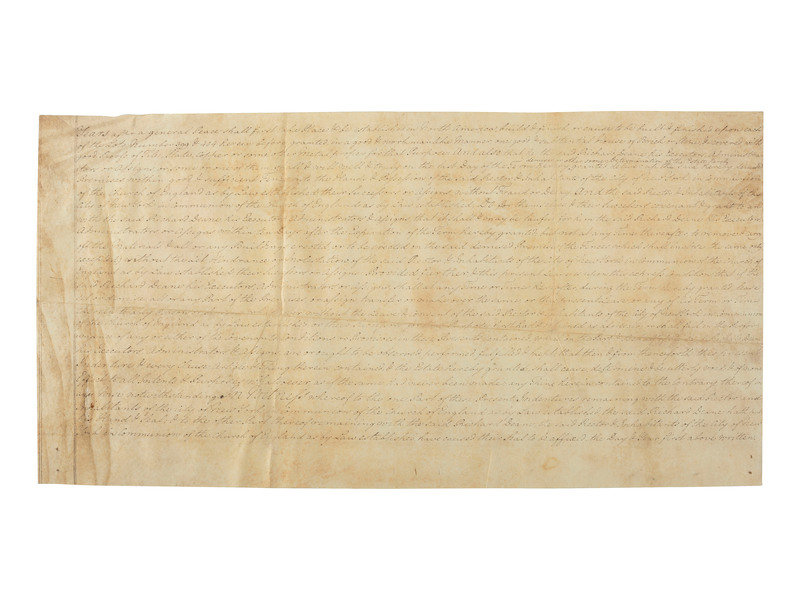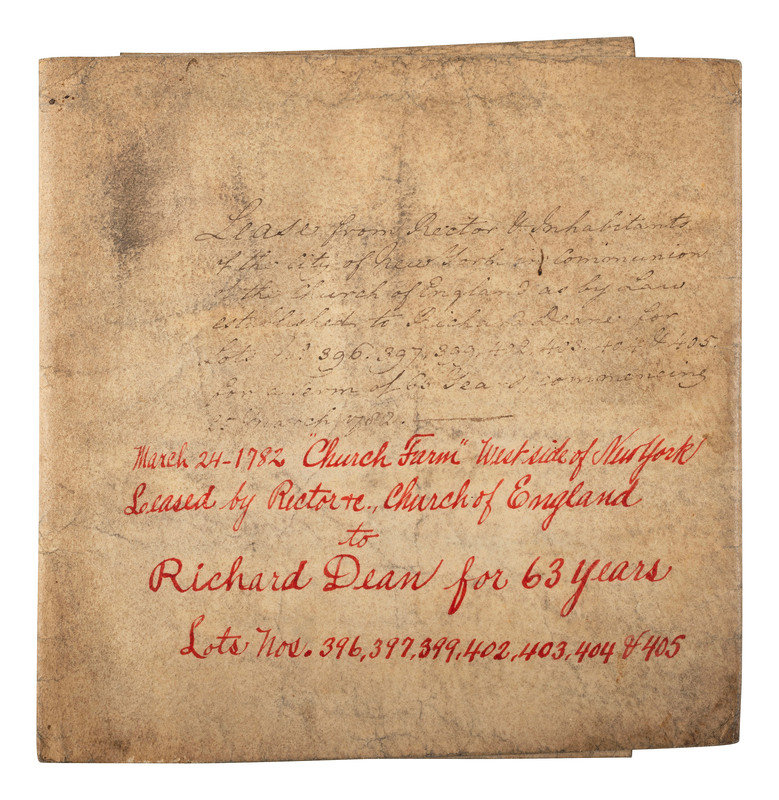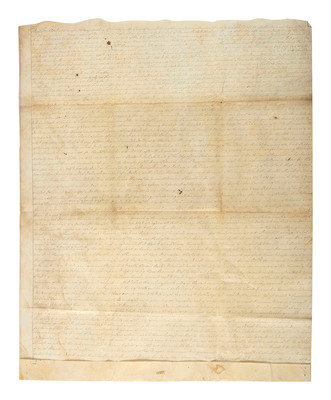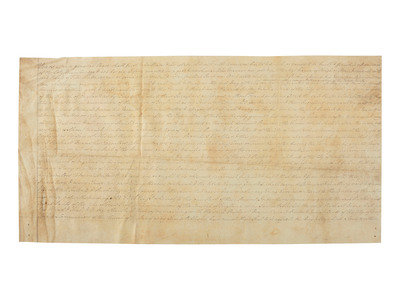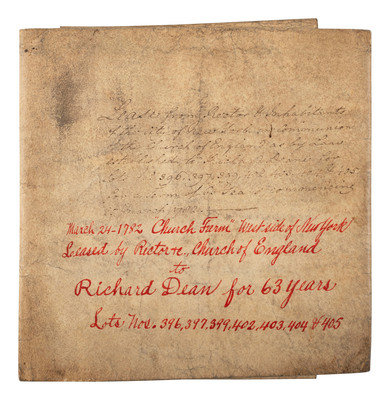Condition Report
Contact Information
Auction Specialist
Lot 5
[COLONIAL] -- [NEW YORK]. Manhattan land lease granted to distiller Richard Deane. New York, 24 March 1782.
Sale 1095 - American Historical Ephemera & Photography, Featuring Property from the James Milgram, M.D., Collection of Broadsides, Ephemeral Americana & Historical Documents
Day 1 Lots 1-403
Nov 3, 2022
10:00AM ET
Day 2 Lots 404-634
Nov 4, 2022
10:00AM ET
Live / Cincinnati
Own a similar item?
Estimate
$500 -
700
Price Realized
$188
Sold prices are inclusive of Buyer’s Premium
Lot Description
[COLONIAL] -- [NEW YORK]. Manhattan land lease granted to distiller Richard Deane. New York, 24 March 1782.
2 vellum sheets, 22 1/2 x 28 3/4 in. and 22 1/2 x 11 3/4 in., creased, with discoloration to creases and occasional ink stains. Docketed verso.
Lease agreement between "the Rector and Inhabitants of the city of New York in communion of the Church of England" and Richard Deane for lots on the west side of New York, numbered 396, 397, 399, 402, 403, 404, and 405, for 63 years, beginning on 25 March 1782. Rent totals 97 1/2 Spanish milled dollars and one peppercorn each year for the first 21 years, increasing thereafter. Street names referenced in the agreement include Greenwich, Murray, and Warren.
Trinity Church owned the area known as Church Farm in the 18th century, and had the property surveyed in 1762. This survey resulted in the division of much of the land into 20 x 100 foot lots, of which Trinity Church leased out 200 for 21, 42, or 63 year terms, marketing them to artisans as the land was very near Broadway and rents were relatively inexpensive. This may have been what attracted Irish distiller, Richard Deane, to lease land from the church, as sources record that Deane was located near the ferry at Brooklyn. Unfortunately, much of the area was destroyed by British troops before they evacuated the city on 25 November 1783.
Historic Church Farm would become the site of the World Trade Center nearly two centuries later.
See SHINE, Cathleen. "The 'Holy Ground.'" In: The New Yorker. 16 September 2002.
